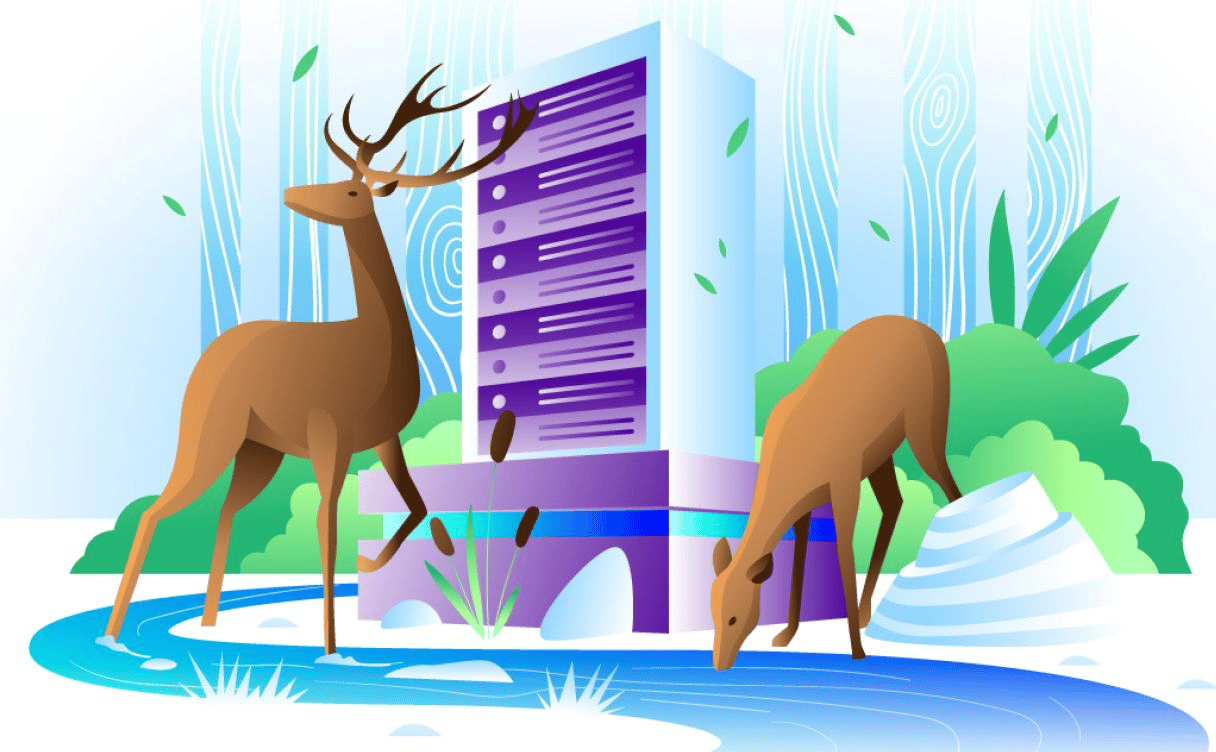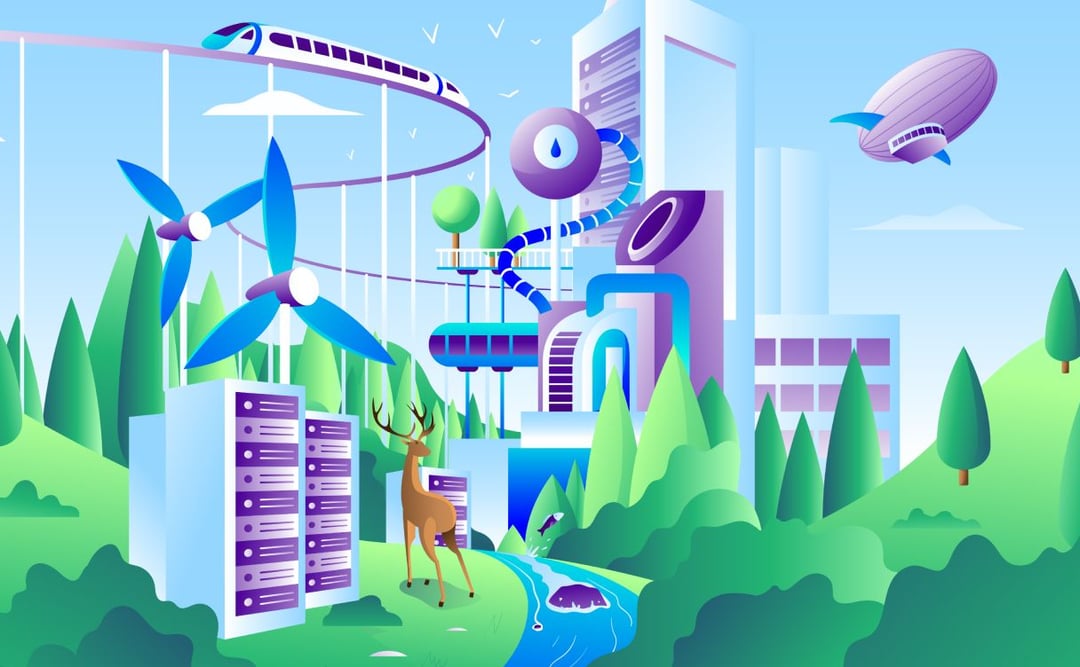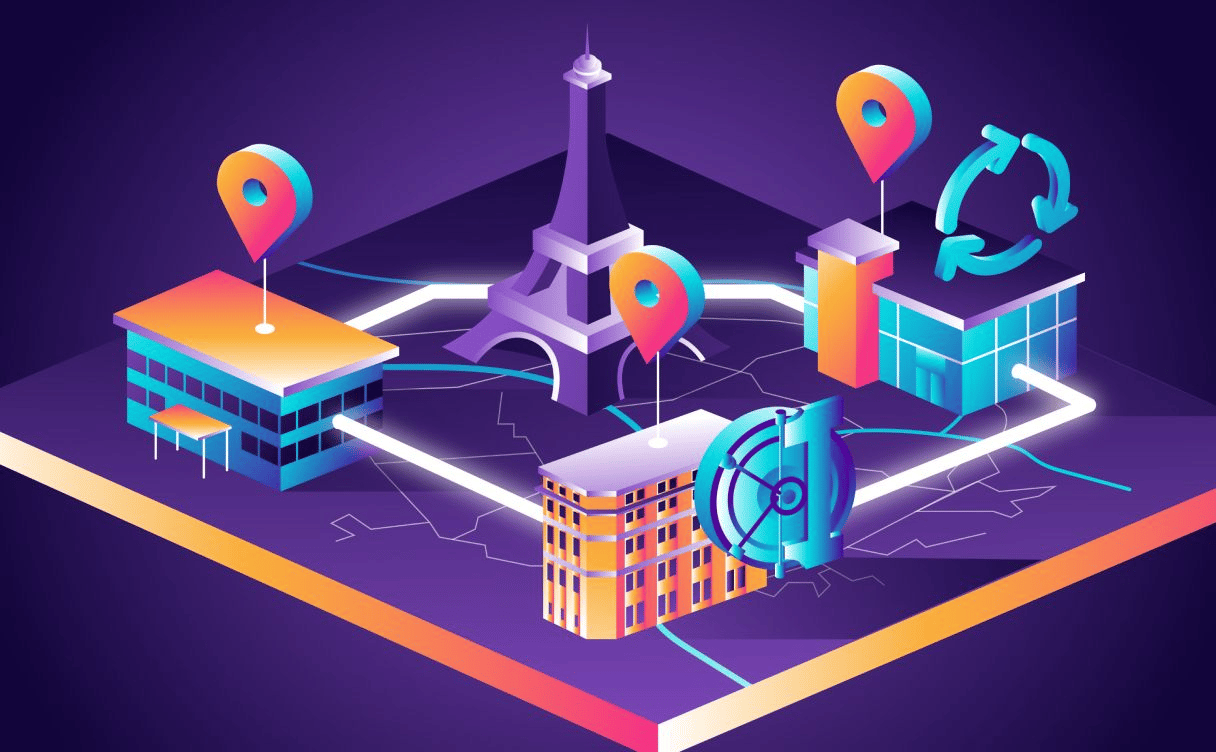
Zero pollution, zero water in datacenters by 2030?
Our water use has multiplied by 6 over the past 100 years globally, and today, it continues to grow by 1% every year UN, 2020. Learn how we can counter that.

Today, cloud service providers (CSPs) are tied in a ‘sustainability race’, all vying to claim their solutions have the least impact on the environment.
Norway’s Lefdal Mine data center, for example, is sometimes referred to as “Europe’s most sustainable data center”, with its waterless cooling solution that relies on its cold underground environment. Also in Norway, Green Mountain has “been recognised as operating ‘The Greenest Data Centres in the World’ for a variety of reasons”, notably because fjord water flows naturally into its installations, to cool down servers. Scaleway is also a pioneer in this field; and these are just three examples amongst many.
Overall, it's a positive next step for an industry that has benefited from intense competition. The last decade's hyperfocus on data center efficiency has made it possible to keep power usage flat, despite a 650% increase in data center workload. Data centers accounted for approximately 1% of global energy consumption in 2010, and this proportion has remained stable, even in the face of digital's explosive usage growth.
Still, the cloud's environmental impact is massive; and as consumers, governments, and workers rally behind sustainable solutions, CSPs are stepping up to the challenge of finding new ways to minimize their contribution to climate change.
The great news is that this creates a financial incentive toward sustainability. But – an inevitable byproduct – this also fosters greenwashing. Everybody's data centers are suddenly sustainable because they use renewable energy, offset their carbon footprint, or find other ways to do their part.
Unfortunately, these efforts and narratives are often one-dimensional, telling only half the story. You'll find CSPs boasting about their data center efficiency, yet conveniently omit water usage figures. Or bragging about using cutting-edge technologies, while failing to touch on the massive waste and pollution they generate through constantly replacing hardware.
True sustainability demands a holistic approach. So to establish whether your CSP is serious about the environment, you need to look at the four principal criteria that affect its activity’s impact. Namely energy consumption, water usage, hardware, and the products it offers.
PUE stands for Power Usage Effectiveness. It's the industry standard for measuring how efficiently a data center operates. It's expressed as a ratio of the total energy used by a data center versus the energy used by the IT equipment itself.
The bulk of extra energy is spent on cooling and, to a lesser extent, keeping the lights on. If, for instance, a data center has a PUE of 2.0, it means that it uses as much energy to cool its servers, as the servers do themselves.
Much of the previously mentioned optimization achievements can be attributed to a gradual decrease in average PUE, dropping from 2.0 in 2011 to approximately 1.6 in 2020. For CSPs, it's a game of limbo - seeing how low can you go. Some providers boast figures as low as 1.06 for individual data centers.
A principal shortcoming of using PUE as a measure of efficient use of resources is its opacity in how said efficiency is achieved. It doesn't differentiate between energy sources – for example, specify if renewable energy is used or not, whereas this should be a key criterion. Nor does PUE factor in other key sustainability considerations such as water usage. This means that it can be forcibly lowered by, for example, consuming excessive amounts of water for cooling, to the possible detriment of the local environment.
Some data centers consume gargantuan amounts of water (millions of liters a day), principally for cooling. This puts pressure on water resources everywhere – not only in areas susceptible to scarcity but also where water is abundant. In some cases, more than half of the water used comes from drinking water sources.
For instance, data centers in one small Dutch town are expected to consume an estimated 4.6m cubic meters a year, which equates to the total annual water consumption of nearly 89,000 residents. This has naturally sparked worries about drinking water shortages among locals.
The situation is even direr in the western US, where individual users have had to limit water consumption due to droughts, while data center operators evaded such restrictions.
Globally, billions of cubic meters are wasted by data centers every year, yet less than a third of operators measure water consumption. With water scarcity issues on the horizon, caused by population growth and climate change, it is unacceptable to ignore the threat data centers pose to local and global ecosystems.
Worse still, some data center operators try to purify the water they use to cool their facilities with chemical additives, which can pollute local ecosystems when released back into rivers after usage.
As such, a comprehensively sustainable and socially responsible approach in choosing CSPs demands careful consideration of how much water is used, how it's sourced, and what is the local impact. So if your CSP can’t tell you its water usage efficiency (WUE) rating, you should consider looking for another provider.
In public discourse, operational efficiency gets the most airtime. The environmental footprint of the production and disposal of IT equipment, however, often falls to the wayside, as talking about e-waste and landfills leaking hazardous material into water supplies is far less attractive than boasting about renewable energy and cutting-edge technology gains.
The reality is that 15-30% of a server’s carbon impact comes from its manufacturing. Given the average lifespan of a server is 3-4 years, producing new servers creates a huge carbon footprint that tends to evade scrutiny. Moreover, server rack complexity makes recycling data servers a headache, and often a financial burden.
As such, hardware re-use, refurbishing, and recycling initiatives are another key way to underpin data center operator sustainability initiatives. Scaleway, for example, uses servers for up to 10 years, versus the industry average of 3-4 years.. A current project to repurpose at least 13,000 servers, should save the equivalent of over seven thousand tonnes of CO2.
With the global cloud market on track to grow tenfold between 2020 and 2030, demand for equipment is only going to go up; and yet CPU supply, principally from China, is currently massively delayed. Reusing equipment provides one answer to this spiking demand.
Historically, some data centers have been criticized for wasteful use of energy, particularly concerning entire centers running at full power and devouring resources, despite only a fraction of computational power being used.
This was notably the case when “the cloud” was principally dedicated servers, which needed to be ‘always-on’ even if only used at, say, 30% of their capacity. Today, the public cloud opens up new pathways to efficiency.
With newer technologies like Serverless, for example, resources are used flexibly, by scaling up or down in response to demand. This means energy is only used when the product is used. When no longer required, resources - and the hardware the products run on - are reallocated elsewhere, making maximum use of consumed energy. Not only is this more cost-effective, but it also takes server infrastructure management off the shoulders of its users.
If your CSP offers energy-conscious cloud products like Serverless, it’s another sign that it takes sustainability seriously.
We, as companies and consumers, cannot let the industry's massive gains toward sustainability falter. Excellence in any one criterion is commendable, but combating climate change requires a holistic approach that cannot be reduced to any individual factor.
Any action or inaction today will be compounded greatly going forward. And whilst we expect future regulation and public scrutiny to help, it’s ultimately clients demanding more responsible solutions that fundamentally change a market. As such, it is those CSPs who give their clients the possibility to choose sustainability who will win; both in terms of their businesses, and in terms of the planet.
So why not start by asking the question: just how sustainable is my cloud provider?
This is the latest in a series of posts detailing the 10 cloud trends set to mark 2022, based on this initial post.

Our water use has multiplied by 6 over the past 100 years globally, and today, it continues to grow by 1% every year UN, 2020. Learn how we can counter that.

Discover how DC5 operates: How do we optimize the energy footprint of datacenter? How can we prevent power loss? How can we deliver proper cooling make it modular?

Discover how Scaleway built a datacenter out of Abri Lefebvre: a passive defense shelter built between 1937 and 1939 under the Ponts et Chaussées laboratory.